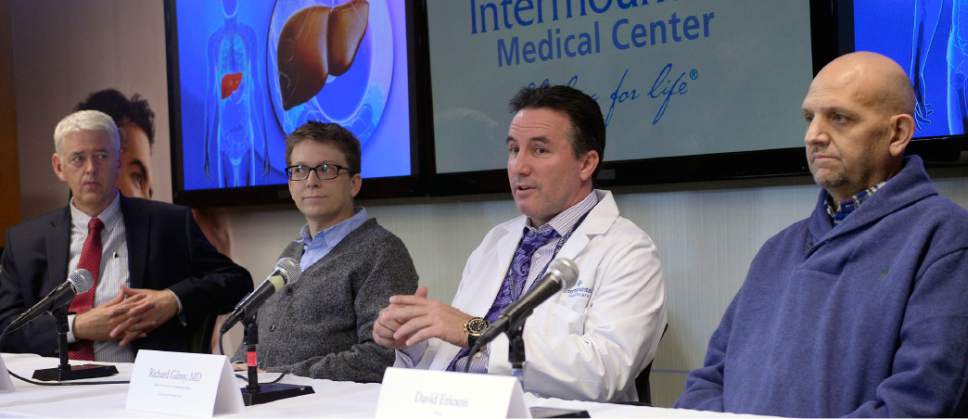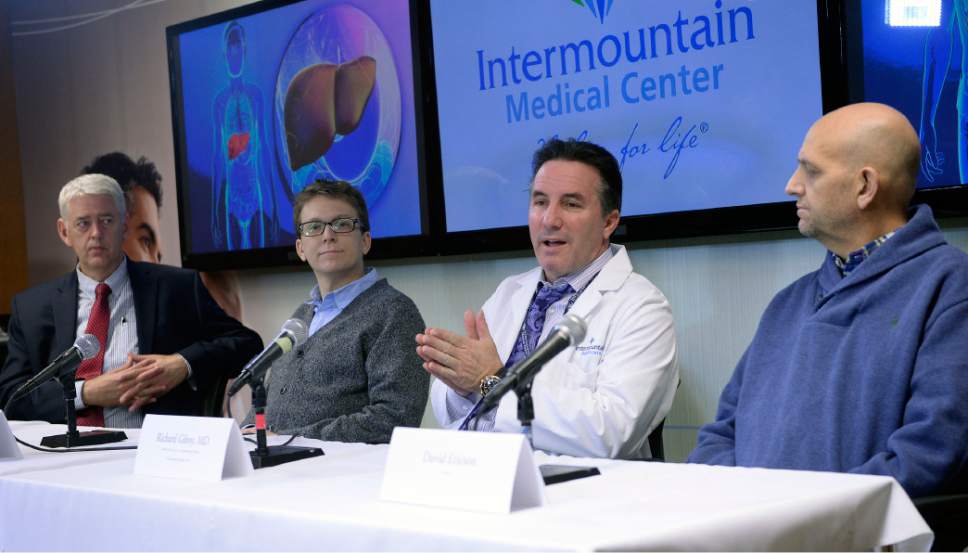This is an archived article that was published on sltrib.com in 2016, and information in the article may be outdated. It is provided only for personal research purposes and may not be reprinted.
After waiting three years for a liver transplant, Lorenzo Swank was quickly running out of options.
Swank suffered from Nonalcoholic Steatohepatitis, which led to cirrhosis, and was confined to a hospital bed earlier this year, his life counted out in a matter of weeks, not years.
But then a physician with Intermountain Medical Center approached him with an idea: How would he feel about receiving a liver from someone infected with hepatitis C and then take the drugs necessary to cure it?
Swank, now 30, barely hesitated. Hepatitis C was better than death, he said.
"If I had been feeling better and not really been on death's door right then, I probably would have waited longer" for a healthy liver, Swank said. "It was either receive an organ that had hepatitis C or wait and hope another organ would get here in time."
That was about 90 days ago. Swank already is hiking, he said, and has been cured of hepatitis C. He is one of two Intermountain patients to receive a liver from a donor infected with hepatitis C, said Richard Gilroy, Intermountain Medical Center's medical director of liver transplantation.
Hepatitis C is a liver infection that can become a long-term, chronic infection. The Centers for Disease Control and Prevention estimates that between 2.7 million and 3.9 million people in the U.S. have chronic hepatitis C.
However, Gilroy said, 98 percent of people can be cured of the infection, making the kind of transplant Swank received possible.
Swank said he had to take six pills per day for 12 weeks.
"It's the most gentle treatment I can think of," he said. "Given [the drugs] you have to take after a liver transplant ... six pills a day doesn't even register on my radar."
It also could mean an additional 600 livers available each year, Gilroy said.
And that's a big deal: about 12,000 people are added to the waitlist every year, but only 7,000 are taken off, according to an Intermountain news release.
"This creates a supply-and-demand disparity that results in about 1,500 people dying each year while waiting for a donated liver to become available for transplant," the release stated.
Gilroy isn't sure if other places around the country are doing these kinds of transplants, but said Intermountain physicians are paying close attention to how these two patients react to the transplants.
So far, he said insurance has covered the procedure.
Swank said he's glad he did it.
"I wish I had known it was an option earlier, it's just not well-known right now," he said.
Twitter @alexdstuckey





